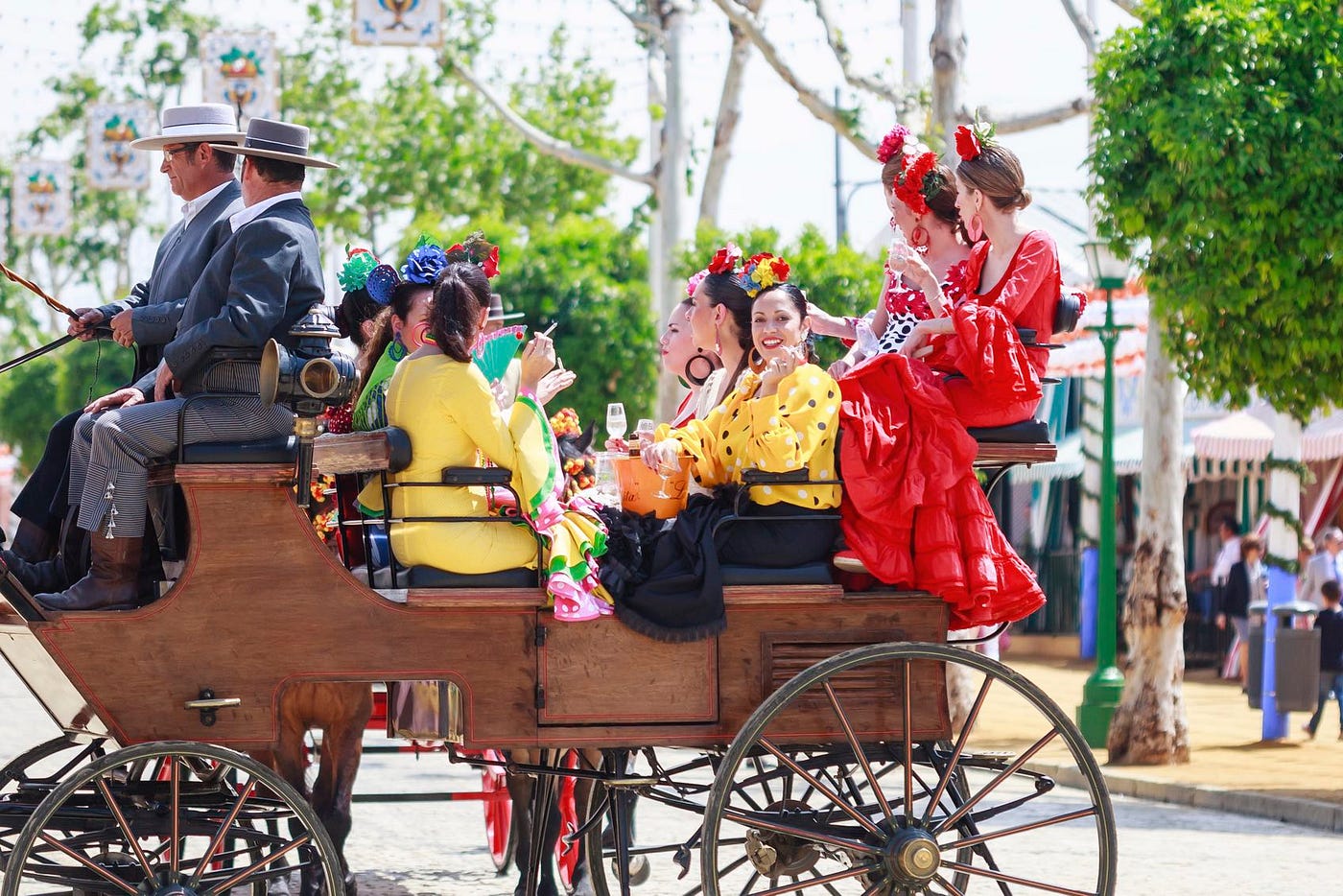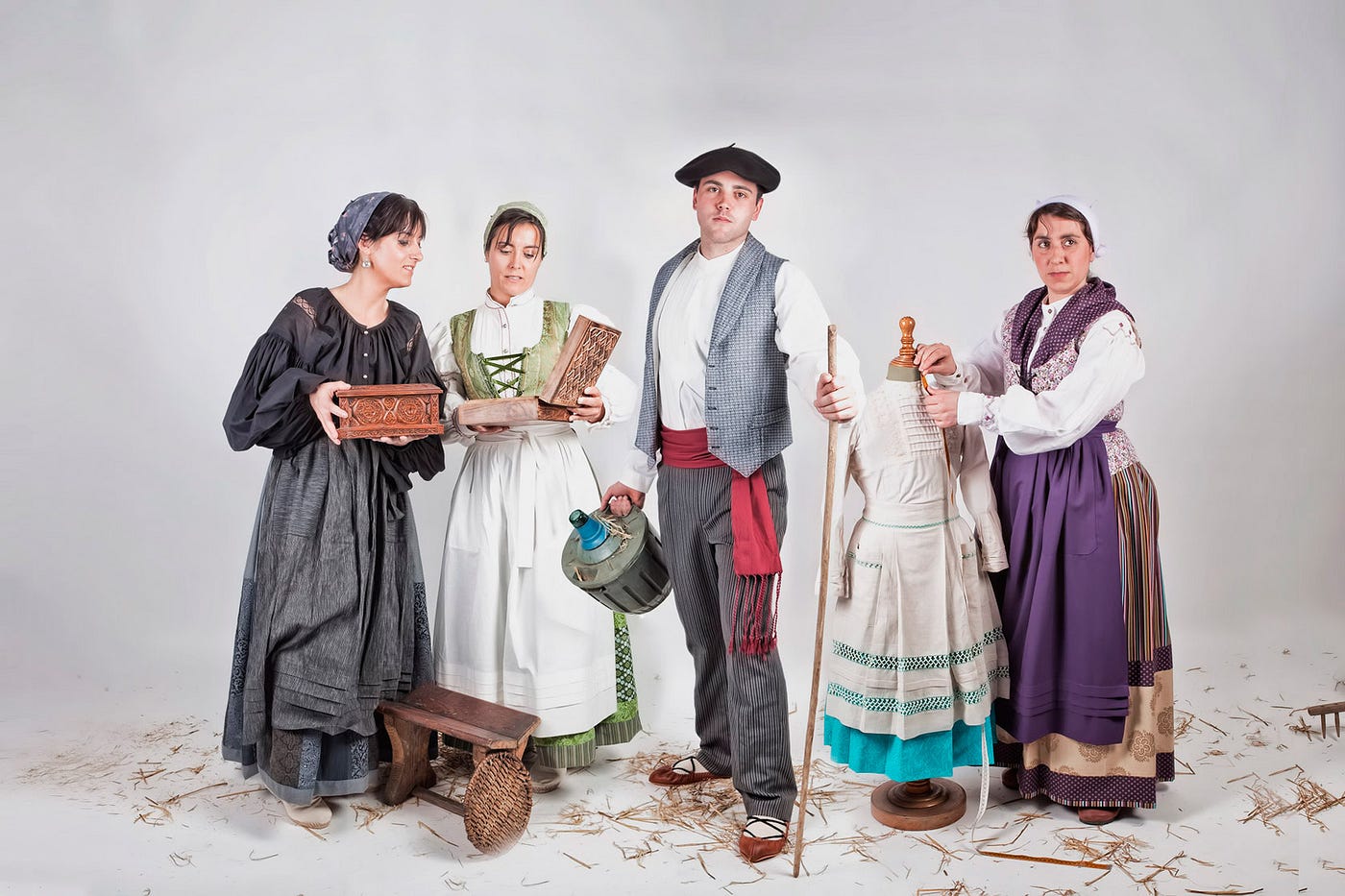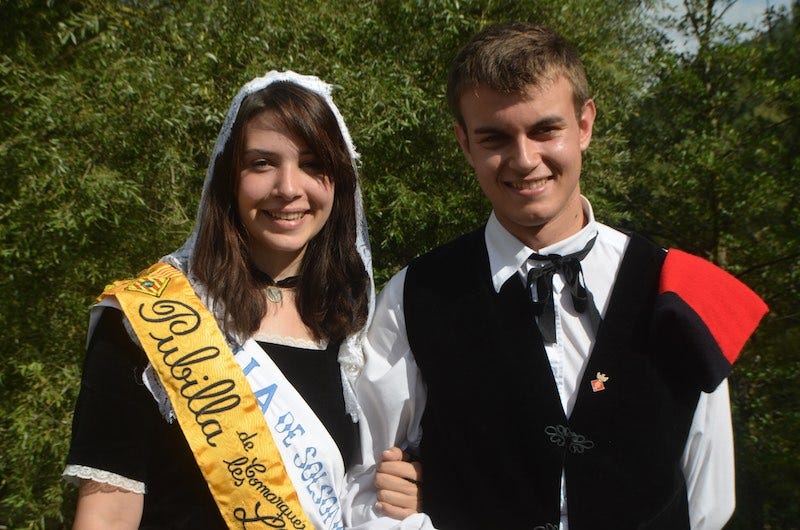Red and Black Spanish Dress From Madrid Spain
5 Traditional Spanish Outfits to Discover
![]()
You're probably most familiar with the typical outfits worn by flamenco dancers, however there are other regional Spanish clothing to discover.
As an important part of the Spanish culture, each region has its own particular attire that is the result of a complex mixture of Roman, Arab, Berber and Latin fashions.
While you won't see people walking down the street wearing these clothes on an average day, they are on full display during town festivals and fairs as a way to remember and celebrate traditions.
Traje de flamenca (Andalucía)

The traje de flamenca or 'flamenca outfit' is the dress that traditionally women wear at Ferias (festivals) in Andalusia. It has undergone significant changes over centuries up to the present day.
There are two versions of the flamenca outfit: one worn by Flamenco dancers and other worn as a regional daily dress. This regional costume is known for being colorful and elegant. The skirt and the sleeves have flounces and they may be either plain or patterned with the polka dots. In general, the outfit includes a shawl ('mantón de Manila') that women wear over their shoulders and flowers and decorative combs in their hair.
Fallero and fallera (Valencia, Valencian Community)
The traditional clothing of the Valencian Community varies according to the area and the city. In Valencia, which is the capital of this Spanish autonomous region, we find 'traje de fallera' for women and 'traje de saragüell' or 'traje de torrentí' for men. These costumes are normally worn during the festival of Las Fallas that is celebrated in March. However, Valencian citizens already wore them in 18th century, before the establishment of Fallas as a local celebration.

At the beginning of the 18th century, the Fallera dress was the typical work dress of the female town's farmers, but, a few years later, it became an outfit for important celebrations. It's composed of a long skirt, a bodice ('corpiño' in Spanish) and a lace apron or 'delantal'. The shoes normally match the fabric of the bodice and the skirt. One of the most surprising features of the Fallera outfit is the hairstyle. Falleras wear a large bow decorated with a big comb at the back of the head and two little bows at both sides of the head, known as 'rodetes'.
Chulapo and Chulapa (Madrid)

The traditional clothing in Madrid is the 'traje de chulapo' for men and 'traje de chulapa' for women, which is most commonly worn during the San Isidro celebration in May. As you can see from the picture above, the chulapas used to wear a tight white blouse with lantern sleeves, a polka dot skirt or a long dress, a head scarf with two carnations, and a 'Manila' shawl over the shoulders. The tight dress is an evolution of the wide skirt and ended up being as representative as this one or more.
The chulapos wear a vest or a narrow short jacket with a carnation on the lapel, dark tight trousers, a black or grey cap, low boots, and a white neckerchief.
Baseritarra (Basque Country)

The traditional costumes in the Basque Country are very diverse, because each region has its own typical outfit. However, 'baseritarra' is one of the most popular Basque outfits. On the one hand, women used to wear a long red skirt with a black apron on top, a white shirt, and a head scarf of the same color. If the weather is cold, they can wear a wool shawl over their shoulders. On the other hand, men wear white shirts and trousers, red belts and the typical 'txapela' over the head. The traditional footwear for both men and women is the 'alpargata'.
Hereu and pubilla (Cataluña)

The traditional dress of Cataluña is called 'tratge d'hereu' for men and 'tratge de pubilla' for women. It includes the 'barretina', a sort of woollen, long cap usually purple or red, and the 'faixa', a kind of wide belt for the men, and 'ret', a thin net veil over the head for the women. The most popular footwear is the 'espardenya' or espadrille.
Red and Black Spanish Dress From Madrid Spain
Source: https://blog.spainintheusa.org/5-traditional-spanish-outfits-to-discover-7f24dc9bd4d